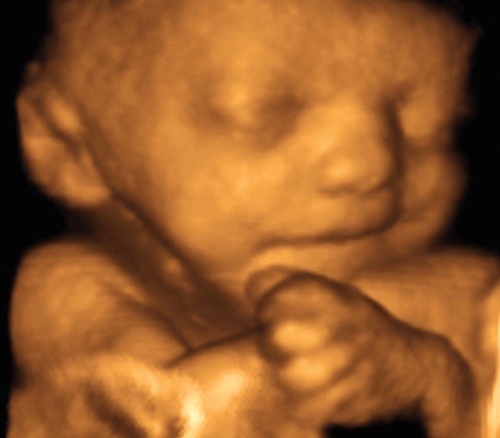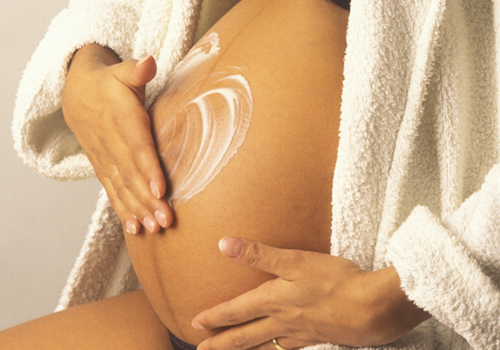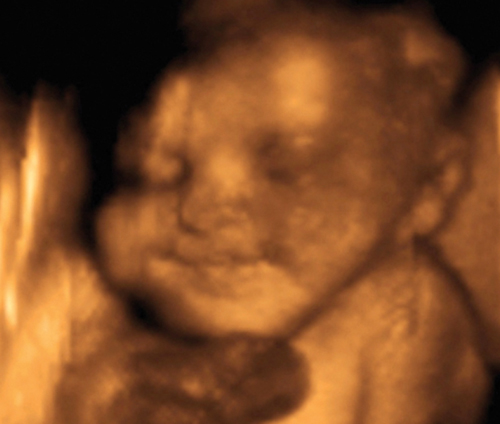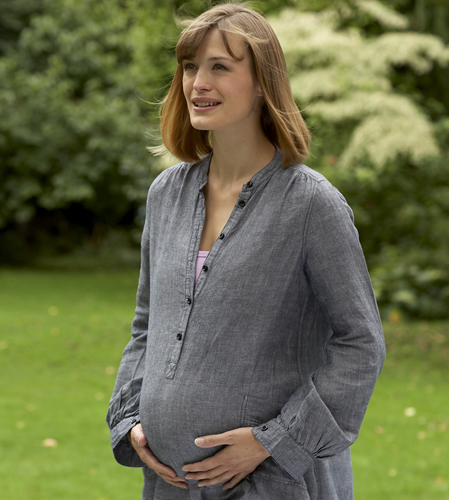You are 32 Weeks and 2 Days 54 days to go…
Every 40 minutes, your baby swallows enough amniotic fluid to fill his stomach, before emptying it back into the amniotic sac.
Your baby today
During this week your baby’s fingernails have become fully
developed and now approach the tips of the fingers. Bathed in amniotic
fluid, the nails are kept very soft: it’s only after birth that your
baby might tend to scratch and need to wear mittens.

Your baby is swallowing
and recycling almost half a liter of amniotic fluid each day. In
addition to providing him with nutrients, especially proteins, this
fluid is important for the healthy development of the gut. Your baby’s
sense of taste is thought to have developed to such an extent now that
if you have eaten spiced food he can distinguish this in the fluid he
drinks.
Amniotic fluid does not
enter the lungs but travels down the esophagus into the stomach where
it is stored for a short time. At this stage, the stomach fills every 40
minutes, but, from 35 weeks, as the stomach enlarges, this rate slows
down to every 80 minutes. Muscle contractions move the fluid in waves
into the small and then large bowel. As it travels along the bowel,
water is reabsorbed so that only waste material or “meconium,” enters
the colon, the final section of the large bowel. This meconium
accumulates in the large bowel, which is completely full by the time
your baby is born. Babies don’t usually pass meconium before the birth
but do so soon after. Meconium consists mainly of skin cells, lanugo
hairs, and vernix. It has a greenish color due to the presence of
bilirubin, a breakdown product from red blood cells.
… The birth
False alarms
In the next few weeks,
as you and your partner await your baby’s arrival, you may experience
one or two false alarms, especially if it’s your first baby. A false
alarm can come at any time of the day or night and it won’t respect
important meetings or deadlines.
It can help if you—as well as your partner—familiarize yourself with all the signs that indicate labor may be starting .
If, however, you’re ever in doubt, do contact your doctor to ascertain
that labor has not started, rather than assuming that this is the case.
She will be very experienced in dealing with false alarms and won’t mind
you contacting her.
Itchy skin
Having itchy skin on your belly is common: as the skin there stretches and thins, it can become dry. You could try using a moisturizing lotion to soothe this.
If, however, you have
severe itching on your abdomen, or on the palms of your hands or soles
of your feet, see your doctor. This itching can be a sign of obstetric cholestasis,
a rare pregnancy condition involving the liver, which causes bile salts
to enter the bloodstream, making the skin (especially on the hands and
feet) itchy, although there is no rash. The condition may also cause a
vitamin K deficiency. Vitamin K helps the blood to clot, so a deficiency
increases the risk of bleeding for both mother and baby. Medication to
bind the bile salts and vitamin K supplements are effective treatments.
Some studies suggest early induction of labor (at around 37 weeks) helps
avoid complications. The condition resolves after delivery, usually
without any long-term liver damage.

You are 32 Weeks and 3 Days 53 days to go…
As your belly grows, it’s normal to feel you want to support it when you’re walking around.
Your baby today
Your baby’s position in the uterus is influenced by your own
posture. Gravity has some effect on your baby, so whether you are
standing or sitting, and which side you lie down on affects the way your
baby’s back is turned and which side he rolls onto.

You’ve probably had to change
the way that you exercise by now due to your growing abdomen. You may
well have had to replace jogging on the treadmill, for example, with
going for long, brisk (or not so brisk!) walks. If you find that even
walking makes your belly and pelvis sore or uncomfortable, you may find
you naturally hold up your belly with your hands to try to give it some
extra support and to give your pelvis and back a break. Some women say
it feels as if the baby “might fall out.”
You might want to
invest in a pregnancy support band; made of stretchy fabric, this useful
item supports the belly and can help prevent lower back pain.
Walking at a comfortable pace
when you are heavily pregnant will cause your belly to shift around and
your instinct may be to support your baby with your hands.

Buying a baby monitor
There are hundreds
of monitors on the market, so choosing one can be daunting. Although
monitors vary, they have the same basic components—a minimum of two
units: one to transmit your baby’s sounds, and one that stays with you
so that you can hear if your baby is crying or fussing.
Additional features
include: video screens, a moving lights-sound display, low power and
out-of-range warnings, the option to use electricity or batteries, a
talk-back function, and a temperature sensor. Some have a night-light
function. With all these features available, your choice largely depends
on your personal preferences and your budget. If your house is small,
you don’t necessarily need one.
… Your baby
Repositioning your baby
Your movements during late pregnancy
can affect the position of your baby. Ideally, he’ll lie head down,
facing your back, with his chin tucked into his chest. You can encourage
this optimum fetal position by:
Spending time on all fours, wiggling your hips from side to side; or arch your back, then drop your spine down.
Sitting with your knees lower than your pelvis, and your body tilted slightly forward.
Kneeling on the floor, leaning over a beanbag, cushions, or birth ball.
Sitting on a birth ball, with your legs positioned slightly apart and knees lower than your hips, then rocking your pelvis.
Assuming the tailor pose:
sit on the floor with your back straight and the soles of your feet
together. Let your knees fall to the side and rest your elbows on your
inner thighs.
Swimming: breaststroke helps to open the pelvis.